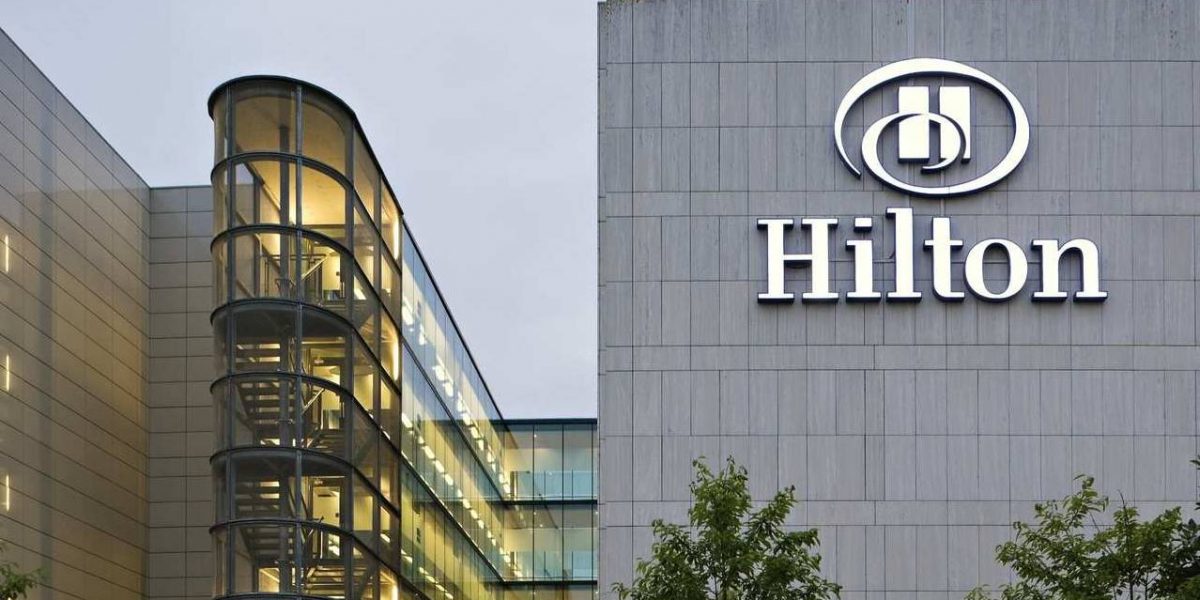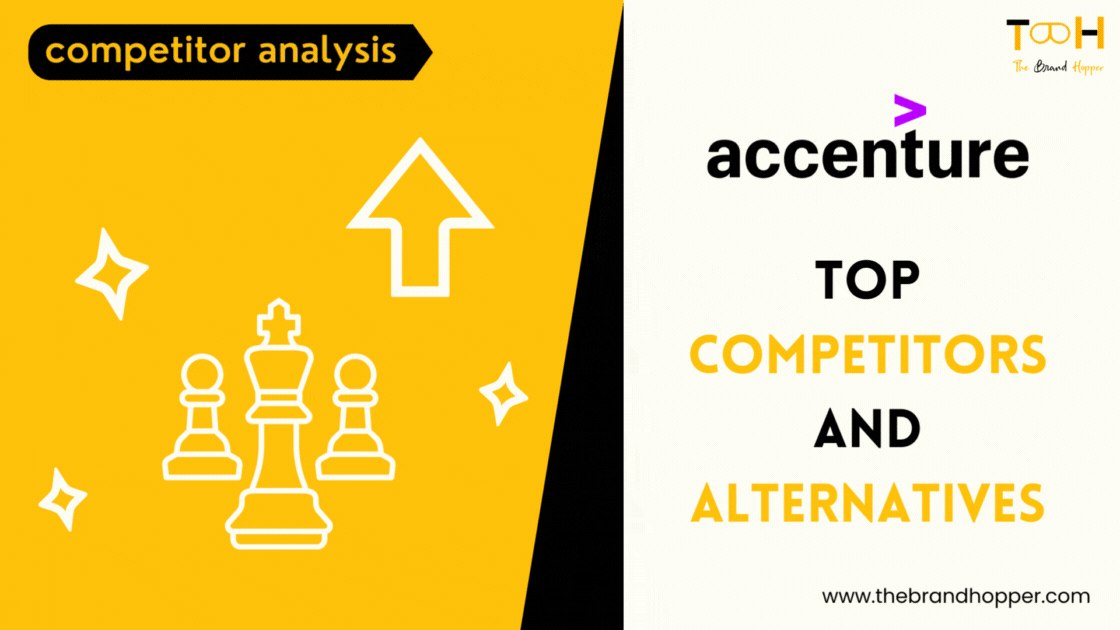Hilton Worldwide Holdings Inc. is a leading global hospitality company, managing and franchising a portfolio of 18 world-class brands comprising over 7,000 properties with nearly 1.1 million rooms, in 114 countries and territories. These properties are both managed and franchised, with the managed and franchised ones combined offering 953,946 rooms. Additionally, Hilton owns or leases 65 properties, including 57 wholly-owned or leased ones, one owned by a partially owned entity, two leased by consolidated variable interest entities (VIEs), and five owned or leased by unconsolidated affiliates. Prior to its IPO in December 2013, Hilton was recognized as the 36th largest private company in the United States according to Forbes.
Hilton’s brands include:
- Luxury: Waldorf Astoria Hotels & Resorts, LXR Hotels & Resorts, Conrad Hotels & Resorts
- Lifestyle: Canopy by Hilton, Curio Collection by Hilton, Tapestry Collection by Hilton, Tempo by Hilton, Motto by Hilton
- Full Service: Signia by Hilton, Hilton Hotels & Resorts, DoubleTree by Hilton
- Service: Hilton Garden Inn, Hampton by Hilton, Tru by Hilton
- All-Suites: Embassy Suites by Hilton, Homewood Suites by Hilton, Home2 Suites by Hilton
- Vacation Ownership: Hilton Grand Vacations
Hilton has a rich history dating back to 1919, when Conrad Hilton purchased a small hotel in Cisco, Texas. Over the next century, Hilton grew to become one of the most iconic and respected hospitality brands in the world. Today, Hilton hotels are known for their quality accommodations, friendly service, and convenient locations. It’s now under the leadership of Christopher J. Nassetta and is headquartered in Tysons, Virginia, United States.
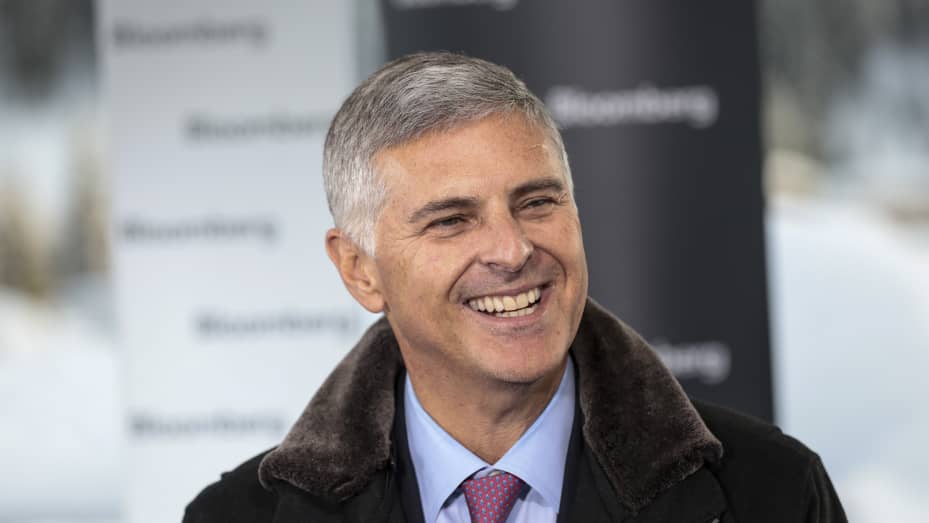
In December 2013, Hilton once again became a publicly traded company, raising an estimated $2.35 billion in its second IPO. During this time, The Blackstone Group held a 45.8 percent stake in the company. In October 2016, China’s HNA Group also expressed interest by acquiring a 25 percent equity interest in Hilton from Blackstone.
The company’s roots trace back to its founding by Conrad Hilton in 1919, initially known as Hilton Hotels Corporation in Cisco, Texas. Its headquarters shifted to Beverly Hills, California, in 1969, where it stayed until 2009. Then, in August 2009, Hilton relocated its headquarters to Tysons Corner in Fairfax County, Virginia, near McLean.
Marketing Strategies of Hilton
Hilton employs a multifaceted marketing strategy to maintain its position as a leader in the hotel and hospitality industry. These strategies encompass various aspects of the marketing mix and aim to attract and retain customers, build brand loyalty, and adapt to changing market conditions. Here’s a detailed breakdown of Hilton’s marketing strategies:
1. Customer Segmentation
Hilton Worldwide Holdings Inc., commonly known as Hilton Hotels & Resorts, is one of the largest hospitality companies in the world. As part of their marketing strategy, they use customer segmentation to better understand and target different groups of customers. Here are some key insights into how Hilton uses customer segmentation:
Age-based segmentation: Hilton recognizes that different generations have distinct preferences and expectations when it comes to hotels. To address this, they created three brands specifically designed for different age groups – Canopy by Hilton for millennials, Tru by Hilton for Generation X, and Homewood Suites by Hilton for baby boomers. Each brand caters to the unique needs and desires of its target audience through features like technology integration, social spaces, and flexible room configurations.
Loyalty program segmentation: Hilton knows that not all customers value loyalty programs equally. Therefore, they introduced tiered rewards within their Hilton Honors program, allowing members to earn exclusive perks based on their elite status. These include free night stays, room upgrades, late checkouts, and access to private airport lounges. By offering differentiated benefits, Hilton encourages higher engagement among its most valuable customers while still providing value to those who don’t prioritize loyalty rewards.
Occasion-based segmentation: Hilton acknowledges that customers book rooms for various reasons beyond just leisure travel. To accommodate diverse occasions, they launched several subbrands under the DoubleTree by Hilton umbrella, focusing on weddings, conferences, extended stays, and urban destinations. Each subbrand emphasizes relevant features and services, such as event space, meeting facilities, kitchenettes, and central locations.
Location-based segmentation: Hilton understands that location plays a crucial role in attracting customers. In response, they established regional clusters of properties called “Hilton Groups,” which share resources and collaborate on sales efforts. By grouping hotels geographically, Hilton streamlines operations, reduces costs, and improves efficiency, ultimately benefiting both the company and its guests by ensuring optimal service delivery across multiple markets.
In conclusion, Hilton Worldwide Holdings leverages customer segmentation strategies to enhance guest satisfaction, drive loyalty, and maximize profitability. Through careful analysis of consumer behaviors, preferences, and motivations, Hilton creates tailored solutions that align with individual needs and expectations. Whether it be via age-based, occasion-based, benefit-based, or other forms of segmentation, Hilton remains committed to delivering exceptional experiences that set industry standards.
2. Brand Portfolio
Hilton Worldwide Holdings is one of the largest hospitality companies in the world, operating over 600 hotels across more than 90 countries. One of their key marketing strategies is managing a diverse brand portfolio that caters to different segments of the market. In this article, we will explore how Hilton uses its brand portfolio as a marketing strategy and provide some real-life examples.
Hilton operates under several brands including:
- Waldorf Astoria Hotels & Resorts – luxury hotels targeted at high-end travelers seeking personalized experiences.
- Conrad Hotels & Resorts – upscale hotels for business and leisure travelers looking for modern amenities and services.
- Canopy by Hilton – lifestyle hotels designed for millennials and Gen Z travelers who value local experiences and sustainability.
- Curio Collection by Hilton – a collection of unique independent hotels that maintain their individual character while benefiting from Hilton’s reservation system and loyalty program.
- DoubleTree by Hilton – midscale hotels offering comfortable accommodations and warm hospitality.
- Embassy Suites by Hilton – all-suite hotels ideal for extended stays, featuring complimentary breakfast and evening receptions.
- Hampton Inn by Hilton – budget-friendly hotels providing free breakfast and Wi-Fi.
- Homewood Suites by Hilton – residential-style suites perfect for longer stays, with full kitchens and complimentary breakfast and dinner.
- LXR Hotels & Resorts – a collection of iconic properties known for exceptional service and memorable guest experiences.
- Tapestry Collection by Hilton – a collection of distinctive upscale hotels that offer guests a unique experience through locally inspired design and culture.

By having such a wide range of brands, Hilton can cater to different types of customers with varying needs and budgets. For example, a couple celebrating their honeymoon might prefer staying at a Waldorf Astoria hotel, while a family on vacation may opt for a DoubleTree property.
In addition to meeting customer needs and expectations, Hilton’s brand portfolio allows them to tap into new markets and expand their reach globally. By acquiring existing hotel chains like the Luxury Collection (now part of LXR) and Scandic Hotels (which became part of Hilton’s pipeline), they were able to enter new geographic regions without starting from scratch. This not only increases revenue but also enhances brand recognition and loyalty among consumers.
3. Loyalty Programs
Hilton Worldwide Holdings Inc. leverages its loyalty program known as Hilton Honors as part of its comprehensive marketing strategy to enhance customer satisfaction, drive repeat business, and differentiate itself from competitors.
Hilton Honors is Hilton’s award-winning loyalty program that offers members exclusive perks and benefits across its extensive network of hotels. Members earn points for every dollar spent on eligible room rates, food and drink purchases, and other qualifying activities within the Hilton ecosystem. These points can then be redeemed for free nights, upgrades, merchandise, airline miles, and other valuable rewards. Here are some specific ways Hilton uses loyalty program:
Hilton Honors: Launched in 2017, this multi-brand loyalty platform consolidated several previous programs under one umbrella. By joining Hilton Honors, members can accrue points or miles across multiple Hilton brands, including Waldorf Astoria Hotels & Resorts, Conrad Hotels & Resorts, DoubleTree by Hilton, Embassy Suites by Hilton, Hampton Inn by Hilton, and more. Points earned through stays, purchases, or partner transactions can be redeemed for future stays, merchandise, airline miles, or exclusive experiences like concerts or culinary events.
Personalization: Hilton Honors tailors member interactions via data analytics and machine learning algorithms. By analyzing past behavior, preferences, and communication channels, Hilton can provide customized recommendations, special deals, and personal greetings during visits. This level of individual attention helps build stronger emotional connections with guests and encourages them to remain loyal to the Hilton family of brands.
Status Tiers: To motivate continued participation and engagement, Hilton Honors features four progressive status levels – Blue, Silver, Gold, and Diamond – based on annual point thresholds. Each tier unlocks additional perks and benefits, such as room upgrades, late checkouts, priority reservations, and exclusive lounge access. These tiers create a sense of achievement and exclusivity, driving increased usage of Hilton services and higher lifetime value for both the company and its most valuable customers.
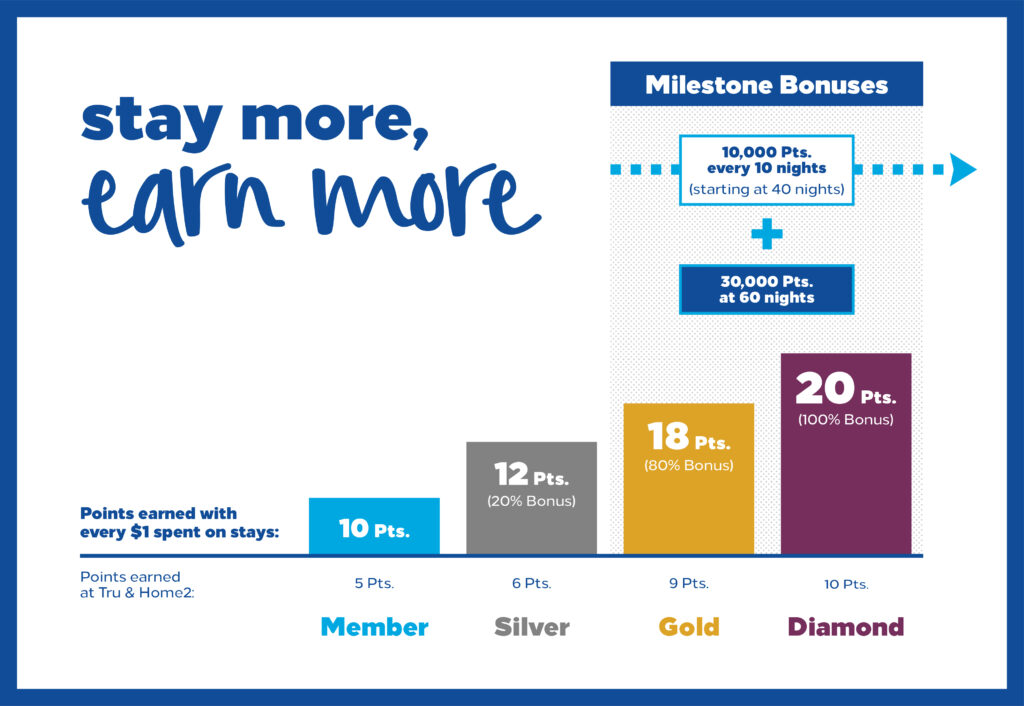
Co-Branded Credit Card Partnerships: Hilton collaborates with financial institutions like American Express and Citi to issue co-branded credit cards offering unique benefits for cardholders who also participate in Hilton Honors. Perks may include exclusive access to limited-time rates, pre-sale event tickets, and curated experiences not available to non-members. For example, the program might grant early entry to popular attractions, behind-the-scenes tours, or meet-and-greets with celebrities or renowned chefs. Such VIP treatment fosters feelings of prestige and privilege among participants, further strengthening their commitment to Hilton.
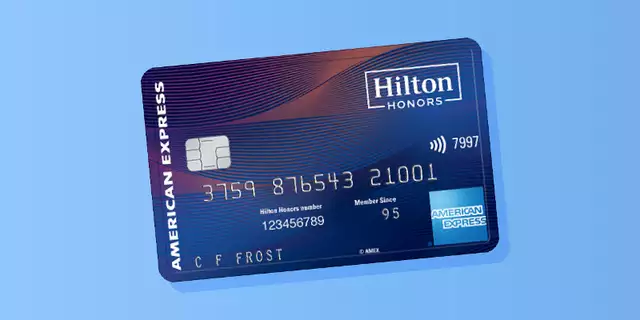
4. Digital Presence
Hilton Worldwide Holdings Inc. leverages digital technologies to reach potential guests, communicate brand values, and streamline booking processes. Some key aspects of Hilton’s digital presence include:
Website Design and User Experience: The official website for Hilton, www.hilton.com, showcases an intuitive interface that caters to various user needs and preferences. Visually appealing layouts highlight property images, amenity options, and location maps to help travelers make informed decisions. Additionally, the site incorporates responsive design elements optimized for mobile devices, ensuring seamless browsing and booking capabilities regardless of users’ preferred platforms.
Social Media Engagement: Hilton maintains active profiles on major social media networks, such as Facebook, Instagram, Twitter, LinkedIn, and YouTube, to connect with current and prospective guests. Regularly posting high-quality visuals, informative articles, and interactive polls keeps followers engaged and interested in the brand. Moreover, Hilton utilizes paid advertising campaigns within these platforms to expand audience reach and amplify messaging impact.
Email Marketing Campaigns: Hilton sends out targeted email communications to subscribers, providing updates on new destinations, seasonal promotions, and exclusive offers. These messages often feature personalized subject lines, dynamic content, and clear calls-to-action (CTAs) to maximize click-through rates and conversions. Furthermore, Hilton employs automation tools to segment recipients based on interests, behaviors, or demographics, allowing for more effective message tailoring and improved response metrics.
5. Content Marketing
At Hilton, content marketing involves creating informative, entertaining, and shareable materials that resonate with target audiences. The company focuses on delivering value to readers rather than just selling products or services directly. Some key aspects of Hilton’s content marketing strategy include:
Brand Storytelling: Hilton creates compelling narratives that showcase its heritage, values, and commitment to excellence. Through storytelling, the company humanizes its brand and connects emotionally with customers. One great example is “The Hilton Effect,” a video series highlighting positive impacts made by Hilton team members around the globe.
Travel Inspiration: Hilton produces captivating visual stories that inspire viewers to plan trips and choose its properties for accommodations. The brand’s blog, Travel Diaries by Hilton, features articles about popular destinations, local attractions, and insider tips for exploring cities like New York City, Paris, Tokyo, etc.
Industry Insights: Hilton shares expert knowledge related to the hospitality sector, offering valuable information for both professionals and casual observers. Its thought leadership pieces cover topics like sustainability, technology innovations, and emerging trends shaping the future of hospitality.
User-Generated Content (UGC): Encouraging customers to share their Hilton experiences through social media not only generates buzz but also serves as powerful social proof. Hilton repurposes these user-created photos and videos across its own channels, further amplifying the message and connecting with prospective clients.
Branded Content Creation: Hilton develops original content that aligns with its core values and targets different audience segments. For instance, the company’s flagship publication, “Travelogue,” delivers destination guides, travel tips, and behind-the-scenes glimpses into Hilton properties. The magazine caters to leisure and corporate travelers alike, providing useful information and showcasing Hilton’s dedication to customer satisfaction.
6. Partnerships
Hilton Worldwide Holdings leverages partnerships as an essential component of their marketing strategy, forming alliances with various organizations to enhance offerings, broaden appeal, and strengthen brand identity. Here are some notable examples of Hilton’s successful partnerships:
American Express Global Lounge Collection: As part of this collaboration, eligible American Express Platinum Card Members can access over 100 airport lounges around the globe when staying at participating Hilton properties. This perk provides added value for cardholders while also driving incremental revenue for Hilton through increased occupancy and upscale spending patterns. The arrangement benefits both parties by enhancing customer satisfaction, building loyalty, and elevating brand prestige.
Amazon Alexa Integration: Hilton has integrated its Connected Room technology with Amazon Echo devices, allowing guests to control lighting, temperature, and other features via voice commands. This integration not only streamlines the guest experience but also positions Hilton as an innovator embracing cutting-edge technologies. Additionally, Hilton can leverage Amazon’s vast user base and data analytics capabilities to gain valuable insights into consumer preferences and behavior patterns.
Live Nation Entertainment: Hilton teamed up with Live Nation, one of the largest live entertainment companies globally, to provide exclusive concert experiences and VIP packages for hotel guests. Through this partnership, Hilton can tap into Live Nation’s extensive artist network and venue infrastructure to curate unforgettable events and enhance the overall guest journey. Both entities benefit from increased exposure, expanded customer bases, and heightened brand affinity.
IBM Watson Advertising: Hilton works closely with IBM Watson Advertising to develop personalized digital ad campaigns tailored to individual consumers based on their preferences, behaviors, and past interactions with the brand. This collaboration allows Hilton to deliver highly relevant messaging across multiple touchpoints, improving conversion rates and return on investment (ROI). Moreover, Hilton can utilize IBM’s advanced AI algorithms and predictive modeling techniques to optimize targeting strategies and maximize advertising effectiveness.
United Airlines: Hilton maintains a strong relationship with United Airlines, offering special discounts and promotions for frequent flyer program members. By catering to travel enthusiasts who frequently use United Airlines, Hilton can attract more high-value customers and reinforce its position as a preferred lodging choice for business and leisure trips. This partnership also enables Hilton to capitalize on United Airlines’ extensive route network, expanding its reach to potential guests worldwide.
7. Local Marketing Efforts
Hilton Worldwide Holdings prioritizes local marketing initiatives to connect with communities and customize experiences that resonate with specific regions. These efforts help differentiate Hilton properties within competitive markets, fostering stronger ties with locals and boosting long-term customer loyalty. Here are several examples of Hilton’s effective local marketing endeavors:
Community Engagement Programs: Many Hilton properties organize charitable activities, volunteer projects, and community outreach programs to give back to the neighborhoods they serve. These initiatives not only promote goodwill among residents but also generate positive public relations, helping establish Hilton as a responsible corporate citizen. Examples include hosting blood drives, supporting local schools, and collaborating with nonprofit organizations addressing pressing issues like hunger relief, environmental conservation, or disaster response.
Seasonal Promotions and Events: Properties adapt their marketing approaches to suit seasonal changes, holidays, and regional celebrations. During winter months, ski resort destinations may highlight snow sports and winter recreational activities, whereas beachfront properties might focus on summer sunshine and water-based adventures. By aligning with local traditions and festivities, Hilton creates engaging experiences that resonate with area residents and visitors seeking authentic encounters.
Food & Beverage Collaborations: Hilton often forms partnerships with popular restaurants, bars, wineries, or craft breweries located near its properties. These collaborations allow Hilton to showcase locally sourced ingredients, signature dishes, and beverages that reflect the character of the region. Guests enjoy immersive culinary experiences rooted in local culture, which increases their likelihood of returning and recommending the property to others.
Cultural Immersion Activities: Some Hilton properties offer guided excursions, workshops, or interactive sessions designed to introduce guests to local customs, arts, and traditions. For example,a Hawaiian resort might arrange hula lessons, ukulele classes, or traditional luaus featuring Polynesian music and dance performances. In New Orleans, a Hilton hotel could host jazz brunches, cocktail mixing tutorials incorporating iconic NOLA spirits, or walking tours exploring the city’s vibrant street art scene. Such experiences create lasting memories and encourage repeat visits, solidifying Hilton’s reputation as a destination expert.
In conclusion, Hilton’s marketing strategies encompass a comprehensive approach that addresses the diverse needs of its customers. Through segmentation, loyalty programs, digital presence, partnerships, and a commitment to customer satisfaction and sustainability, Hilton strives to remain a top choice for travelers worldwide.
Also Read: Checking in to Excellence: A Look at Hilton Hospitality Empire
To read more content like this, subscribe to our newsletter
